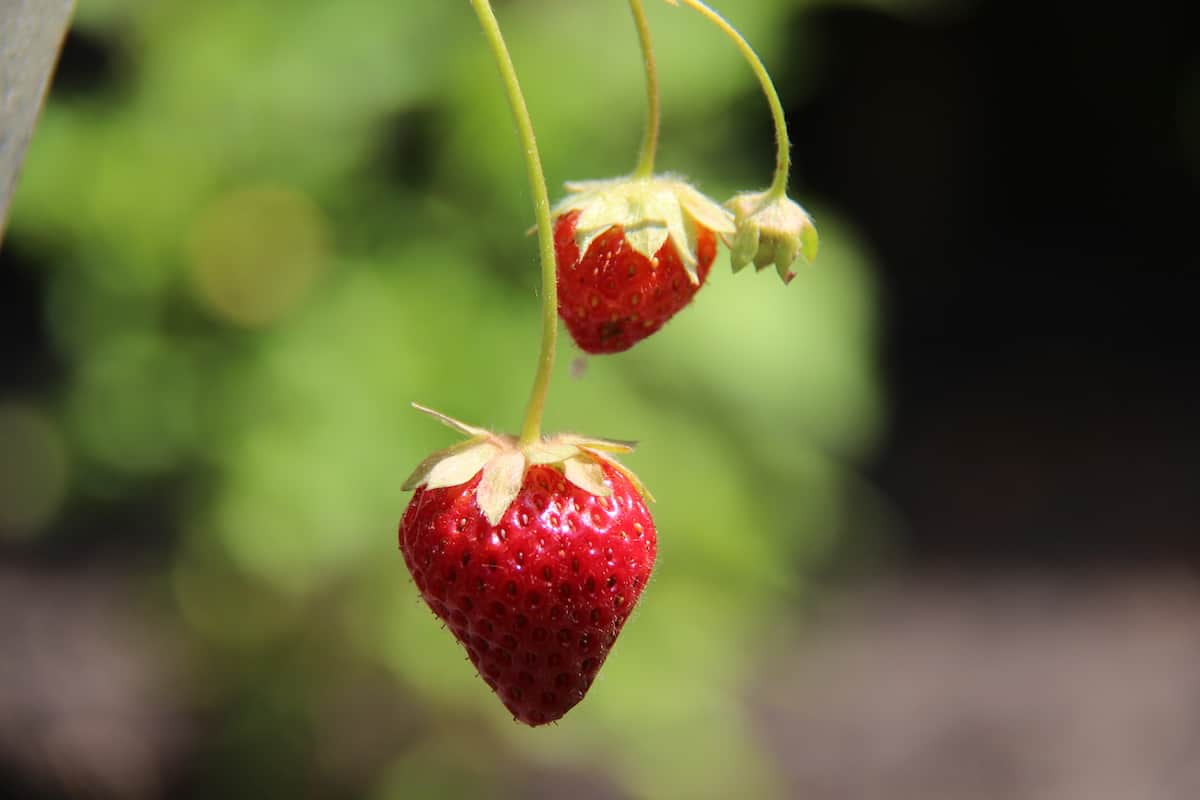Strawberries are perennial fruiting plants that can be grown from seeds, bare-root plants, or potted strawberry plants from the garden center. Your strawberry plants can be grown in the ground, in a raised garden bed, or in many types of planter containers. These easy-care plants grow best in a sunny location with well-drained soil.
Strawberry growing basics
Strawberries are easy to learn how to grow. These productive little plants are a wonderful gardening project for beginner gardeners and plant lovers alike.
Strawberries can be grown at home from strawberry seeds but are usually purchased as baby plants. Strawberry plants are sold either as bare-root strawberry plants (the soil has been washed off the plants, and they are bundled up together) or as normal potted strawberry plants.
Strawberries are perennial plants, meaning that they come back in the spring each year from their overwintered roots. Most cultivated strawberry plants are cold-hardy down to Zone 5, although some strawberry varieties can be grown down to a chilly Zone 3 (check your local growing zone here on the USDA Plant Hardiness Zone Map).
Strawberries can be planted in the ground or can be grown in various types of strawberry planters. You can even grow strawberries indoors!
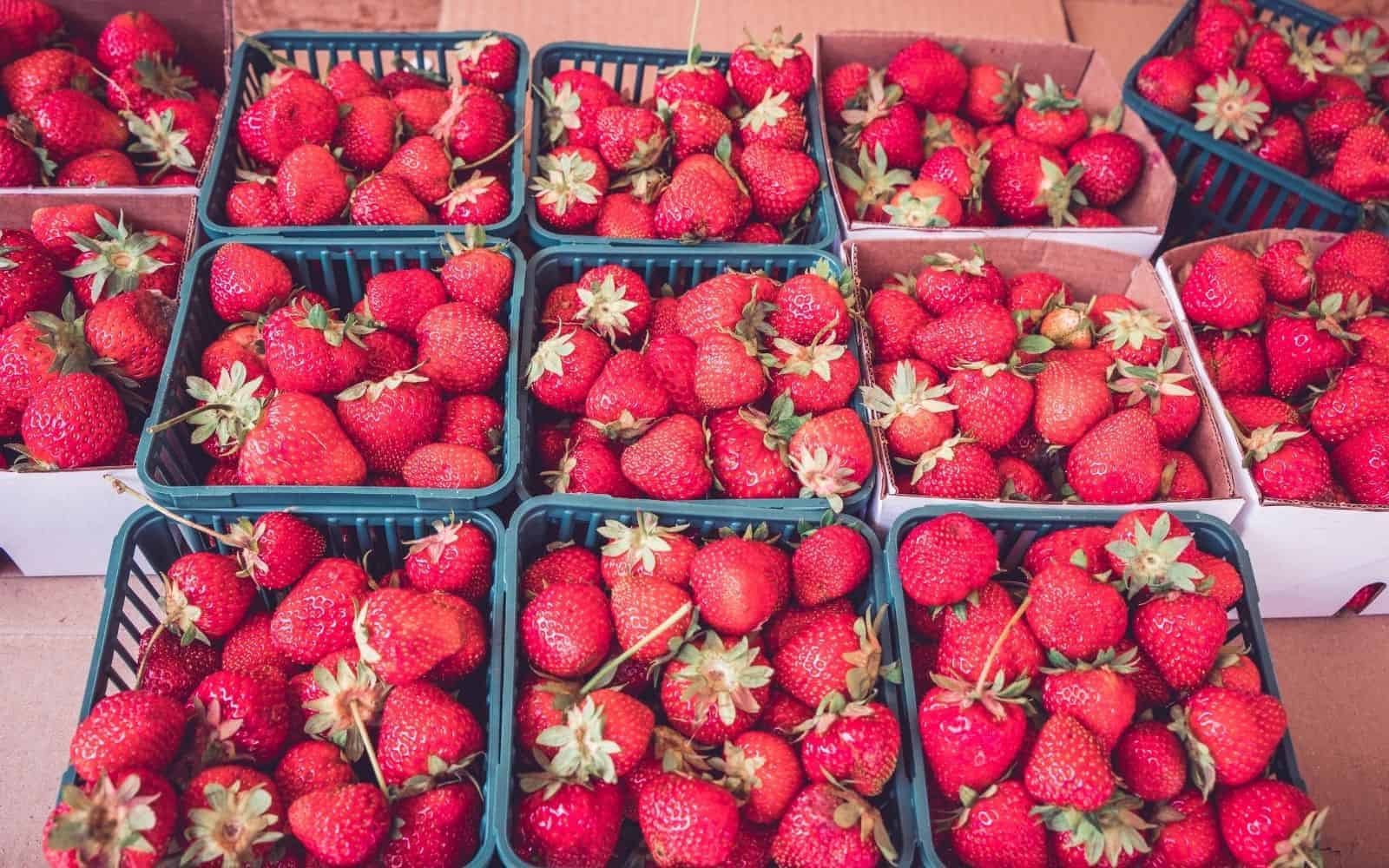
Choosing which strawberry plants to grow
There are hundreds of varieties of strawberry plants. Some strawberry cultivars are known as the best-tasting strawberries, other varieties are grown because they store well, and some are grown solely as ornamentals.
Choosing which strawberry varieties to grow can be quite tricky! Generally, it’s best to look for cultivars that are well-suited to your local climate. It also makes sense to choose strawberry varieties that ripen in a manner that suits your lifestyle.
Matching strawberry varieties to climates
Gardeners in northern areas with cold, snowy winters may want to consider a cold-hardy type of strawberry plant, such as Quinault Strawberry (Washington), Ozark Beauty Strawberry (Arkansas), Jewel Strawberry (New York), or Honeoye Strawberry (New York).
Gardeners in hot, southern climates may want to try growing heat-tolerant strawberry cultivars, such as Eversweet Strawberry, Chandler Strawberry (California), or Seascape Strawberry (California).
Strawberry categories (in terms of ripening & harvest time)
There are three categories of strawberries divided by the times at which they flower and ripen.
June-bearing strawberry varieties are very prolific producers with fruit that tends to ripen all in one big batch over a 3 week period, typically at the end of June. June-bearing plants typically do not grow strawberries in the year they are planted. These plants grow their flower buds inside the crown of the plant in the autumn. Flower buds overwinter in the crown before emerging and flowering in early spring. June-bearing strawberry varieties include Jewel Strawberry, Chandler Strawberry, and Honeoye Strawberry.
Everbearing strawberry varieties generally produce two crops of strawberries each year, typically in late June and again in late August. The first (larger) crop grows from overwintered flower buds, and ripens alongside June-bearing varieties. Everbearing strawberries, however, also grow new flower buds in the early spring, which blossom and fruit in late summer through to mid-autumn. Everbearing plants generally produce fewer berries overall than June-bearing plants, but the harvest is nicely spaced out. Everbearing strawberry varieties include Ozark Beauty Strawberry, Quinault Strawberry, Eversweet Strawberry, and Fort Laramie Strawberry.
Day-neutral strawberry varieties produce strawberries intermittently throughout the growing season. These plants are always setting new blossoms, runners, and leaves. Day-neutral varieties often produce berries the year they are planted. Day-neutral strawberry varieties include Seascape Strawberries, Hecker Strawberries, and Tristar Strawberries, as well as Alpine Strawberries.
“Everbearing strawberries, which generate a good crop in early summer and another smaller one in fall, should not be confused with day-neutral strawberries. They initiate most of their flower buds during long days and tend to lack the productivity and the berry quality of the day-neutrals.”
Homegrown Berries: Successfully Grow Your Own Strawberries, Raspberries, Blueberries, Blackberries, and More, Timber Press
Strawberry plant species
There are several important species of strawberry plants to know about when you’re growing strawberries.
- Modern Hybrid Garden Strawberry (Fragaria ananassa)
- Alpine Strawberry/Woodland Strawberry (Fragaria vesca)
- Chilean Strawberry (Fragaria chiloensis)
- Virginia Strawberry/Wild Strawberry (Fragaria virginiana)
- Musk Strawberry/Hautbois Strawberry (Fragaria moschata)
Modern Strawberry plants (Fragaria ananassa) are hybrids between Chilean Strawberries (Fragaria chiloensis) and Virginia Strawberries (Fragaria virginiana). Chilean Strawberries (sometimes called Beach Strawberries) are large berries with a white interior and pale orange-red exterior. Virginia Strawberries (Wild Strawberries) are very small but have a deep red color. Modern Hybrid strawberry plants are thought to have been developed in France through natural hybridization, creating a large strawberry with deep red coloring.
“It has only been since 1926 that scientists have had the techniques to know that the fraise des bois or vesca had only 14 chromosomes, whereas the Chilean, the wild North American, and the commercial large-fruited strawberry all have 56 chromosomes. Only since 1926 have we known why it was so hard to make the fraise des bois cross with the large-fruited strawberry. The moschata or musky strawberry, which has 42 chromosomes, will cross occasionally on the 56 chromosome berry, but the resulting plants are not productive.”
The Strawberry: History, Breeding and Physiology, by George M. Darrow.

Where to plant strawberries
Strawberries grow best in full-sun locations that receive at least 6-8 hours of direct sunlight per day. Soil should be well-draining, such as sandy loam soil. Remove any weeds from the area prior to planting (and keep the strawberry patch well-weeded). Many gardeners choose to avoid planting strawberries in soil that has been home to crops that may harbor common soil-borne diseases, including peppers, potatoes, and tomatoes.
Plant strawberries in the early spring, preferably in April or in early May, if possible. Wait until the ground has thawed, dried out, and started to warm up with increased spring temperatures. They can also be planted later in the season, but they may not thrive initially as they would have if planted in early spring. Gardeners in mild climates can also plant strawberries in autumn with good results.
Strawberry plants can be damaged by late-spring cold spells and do best in cooler climates when the plants are raised up slightly. This keeps them out of “frost pockets” – the low spots in a yard where cold air sinks to and settles on frosty mornings.
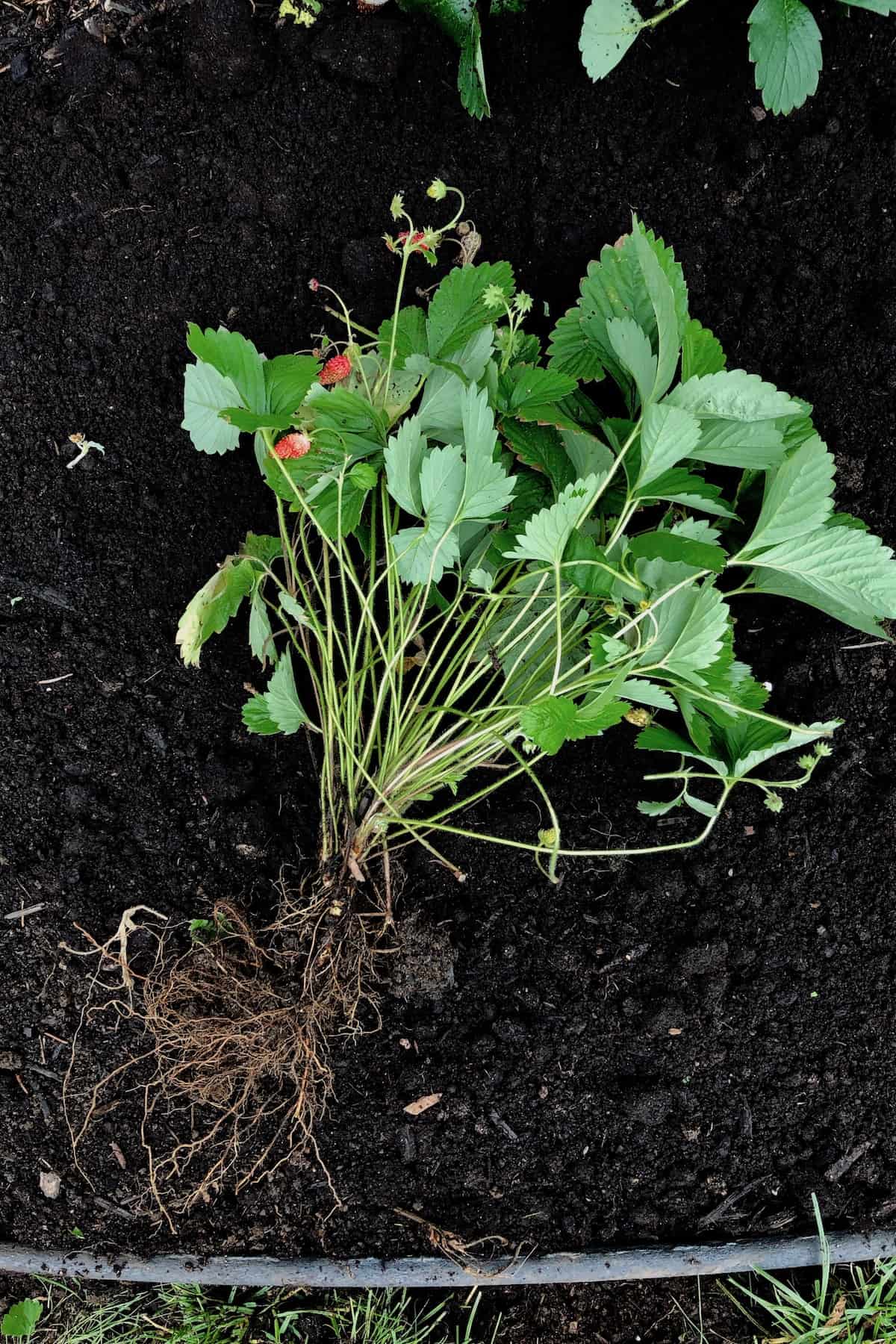
How to plant strawberries
Strawberry plants are sold as either bare-root strawberries or as potted baby strawberry plants. Bare root strawberries are often cheaper per plant, but take some care to be kept moist until planting (soak them in clean water for 30 minutes before planting). Some varieties (mainly Alpine strawberries and day neutrals) are available to purchase as strawberry seeds.
Try to plant strawberries early in the morning (if warm enough), or on an overcast day to avoid the sun shining on the roots and drying them out. Dig a big enough hole to allow each strawberry plant’s roots to spread out. One method of planting strawberries involves making a little cone of soil at the bottom of the planting hole, placing the crown on top of the cone, and spreading the roots out around the plant in a downward-angled fashion.
Backfill the plant carefully, checking to make sure that the top of the soil is even with the mid-point of the crown. The crown of a strawberry plant is the thick stem at the top of the roots that appears to have a kind of thin wrapping around it. The leaves of the plant, as well as blossoms and runners, form in the crown. While the actual roots of the strawberry plant should be under the soil, the crown should not be completely buried. The soil line should be at or below the mid-point of the crown. Gently pack the soil around the roots and water the whole planting area thoroughly.
“Plant at the right depth: too shallow and the exposed crown – where the stems of the plant emerge, will be prone to drying out; too deep and the crown could rot. All the roots should be completely covered, leaving just the crown showing.”
GrowVeg: The Beginner’s Guide to Easy Vegetable Gardening, by Benedict Vanheems

Space the plants 12 to 18 inches apart. If a large space is available but there are only a few plants available, larger spacings may make sense. In general, June-bearing strawberry varieties are planted about 18 inches (45 cm) apart, while everbearing and day-neutral strawberries are planted about 12 inches (30 cm) apart.
Matted rows, typical for June-bearing strawberry patches, can be established by measuring 4 feet between rows. Allow the berries to fill in a 2 foot row around the center planting lines, leaving space for a 2 foot pathway between adjacent rows.
Hilled/mounded strawberries, typical for everbearing and day-neutral strawberry varieties, makes removing any runners easy (if desired). Strawberry gardens can also be grown in small container planters, whiskey barrel gardens, and raised garden beds.
Place a strawberry mulch such as pine needles, compost, shredded leaves, or clean straw on the strawberry bed. Strawberry mulch helps to keep weeds down, stop the spread of soil-borne disease, and keep ripening berries clean.

Caring for your strawberry plants
Strawberries can be fed with a balanced slow-release organic fertilizer in early spring.
Water your strawberry bed with at least an inch of water per week. A good drip irrigation system can help with consistent watering. Avoid standing water by creating good drainage to prevent the roots from rotting. Mulching helps to regulate the soil’s water content.
Remove flowers in the first few weeks after planting new plants to encourage the plants to focus on root development and becoming established in the soil. Remove some of the runners throughout the growing season to guide the plant’s path.
Animals, slugs, and bugs pose a threat to your harvest. Cover the plants with bird netting or place copper ribbons in the beds for protection from hungry creatures.
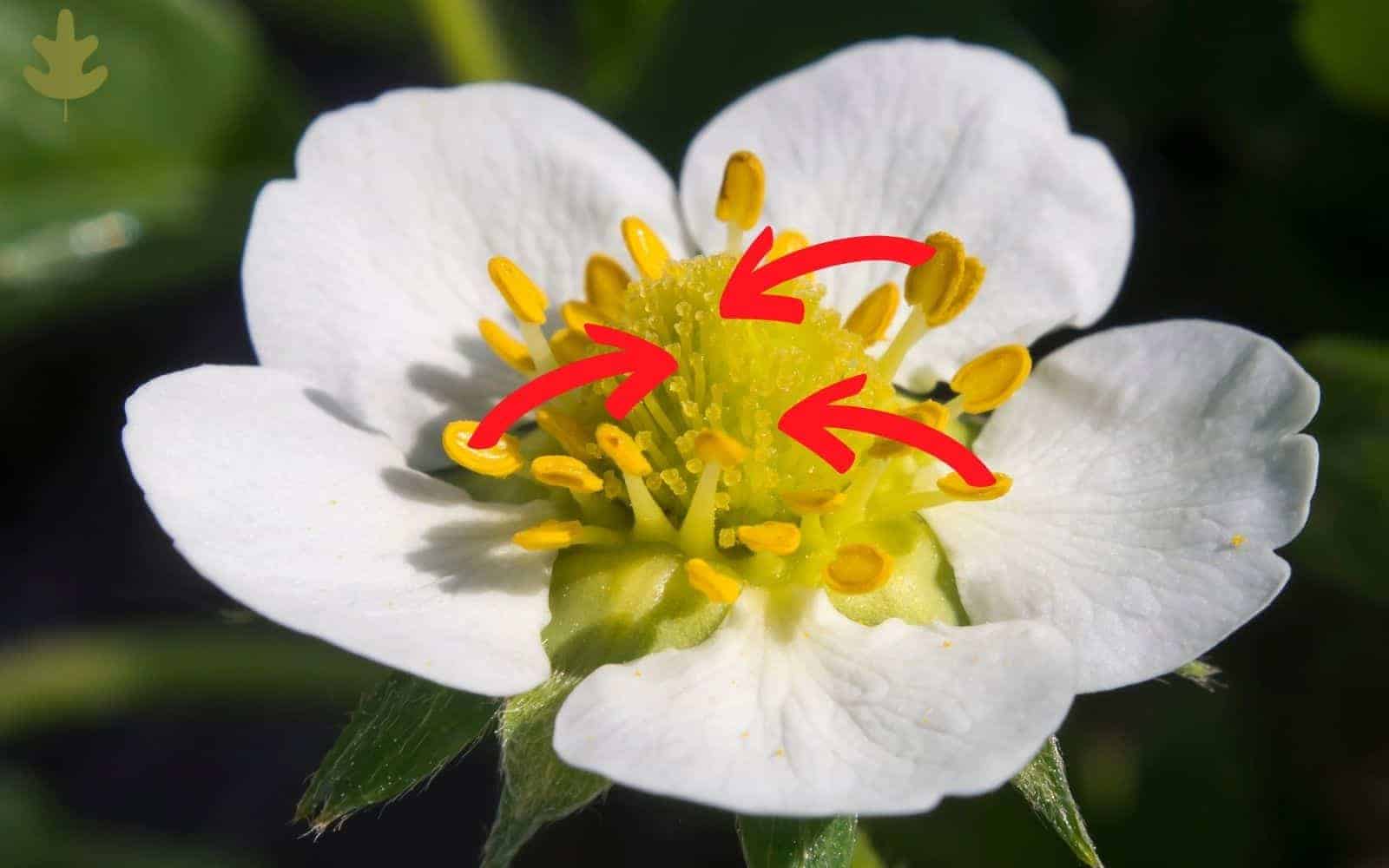
Pollination of strawberry plants
Most types of strawberries grown in the garden are self-fertile. Each strawberry forms from a flower on the strawberry plant. Flowers have pollen-bearing stamens sticking out around the center of the flower. Pollination occurs when the pollen from the stamens is transferred into the middle “pistils” of the strawberry blossom. Strawberry plants can be pollinated by bees, wind, gravity, or by humans (typically with a small paintbrush). Try to plant strawberries with their companion plants to further encourage pollination.
When to transplant strawberries
If you wish to transplant your strawberries, it’s best to do it after the ground thaws. Planting young plant runners can replace older roots. You can do this before the last seasonal frost.
How long do strawberries take to ripen?
Strawberries take about 30 days to ripen from flowers into ripe berries. That said, strawberries can ripen in as little as three weeks or as long as six weeks, depending on the weather. Strawberry plants with ample sunlight and water that are planted in well-drained soil tend to produce ripe strawberries quicker than less healthy plants.
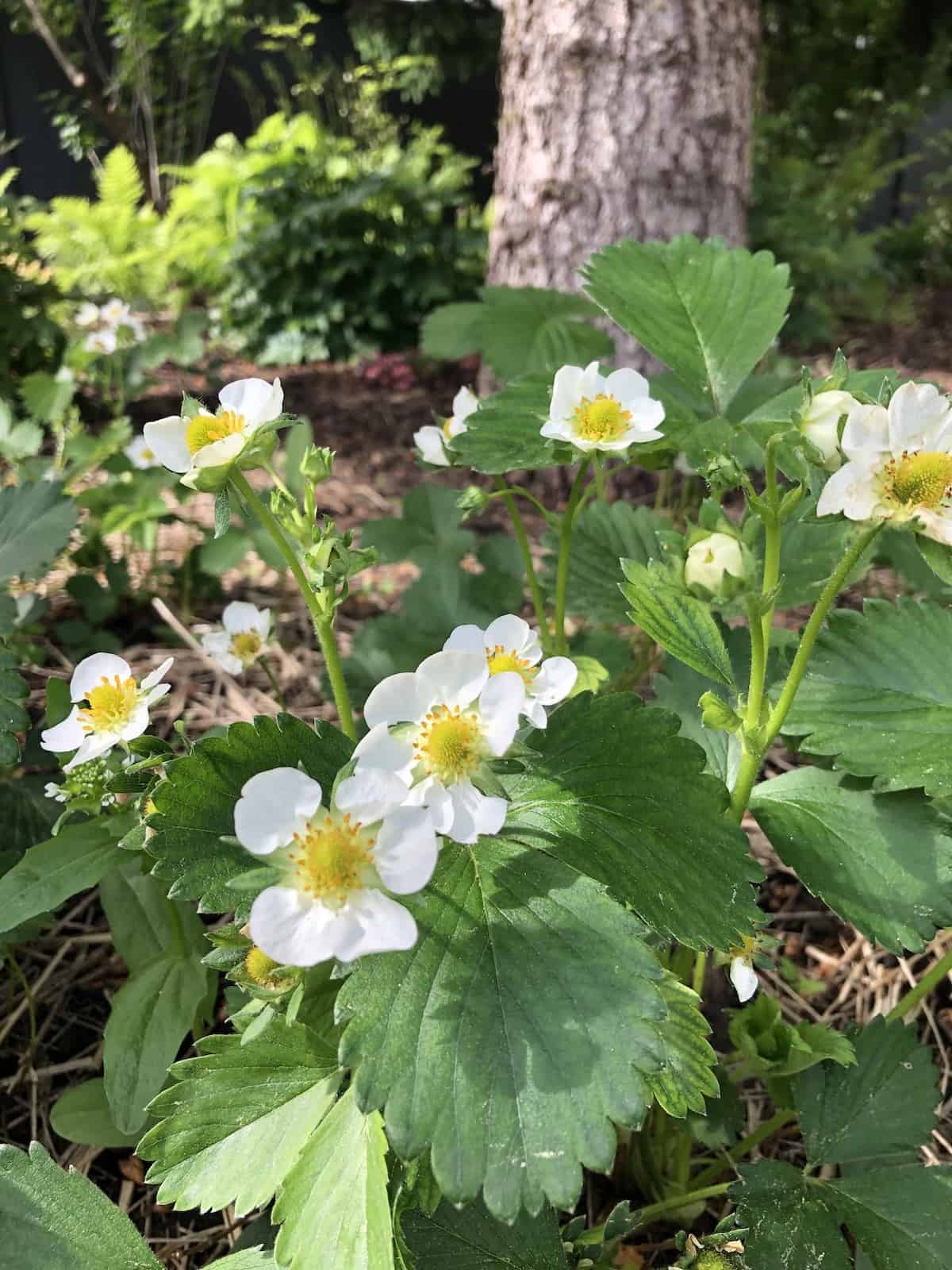
Pests & diseases
One of the most irritating pests to Strawberry plants is the Strawberry Clipper Weevil. The Clipper Weevil attacks the stems of flower buds, which causes the flowers to wilt. A wilted flower above a weevil cut does not produce a strawberry. Strawberry Clipper Weevils use these wilted strawberry flowers as nursery for a weevil egg. Weevil grubs grow inside the bud and emerge as grown beetles just after peak June strawberry season.
Another weevil that attacks garden strawberries is the Strawberry Root Weevil. While these tiny beetles like to live around the soil surface, they tend to eat the roots of strawberry plants. They start with skinny white roots and can eat their way into the strawberry plant’s delicate crown right at the soil’s base. Strawberry plants with roots that have been attacked by root weevils tend to make fewer, smaller strawberries and sometimes have red, discolored leaves.
In terms of disease, strawberry plants can sometimes be infected with Black Root Rot caused by potentially harmful fungi in the soil. As the name suggests, the infection causes the roots to turn brown/black and eventually decay. Black Root Rot can kill a strawberry plant if left unchecked. That said, root rot like this can usually be prevented or lessened by planting strawberries in soil that drains out water easily. Limit fertilizers (try feeding with organic compost instead). Try to minimize frost damage by planting them in a raised bed or hilled garden where the coldest air will sink below them. Provide an overwintering protective mulch after the ground freezes.
Strawberry plants can also be affected by Grey Mold (Botrytis). This is another fungal disease that proliferates in gardens with excess moisture. Grey Mold tends to affect the strawberry fruits themselves, which look like they are coated in thick grey powder. The fuzzy grey layer is actually the spores of the Botrytis fungus. This fungal disease thrives in cool, wet strawberry patches with stagnant air and typically low amounts of sunlight and heat. Strawberry plants are much less affected when planted in a sunny, well-drained location with excellent air circulation and a good strawberry mulch.


